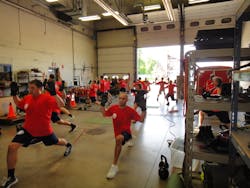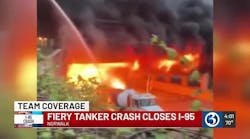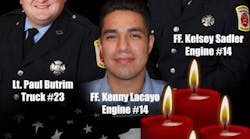As firefighters, we are teachers and trainers. Candidates and probies look to their officers not only to set policies and drill calendars, but also to showcase high personal standards and set examples for others to follow. When it comes to physical fitness and mental stamina, providing this model is paramount. If leaders at the top of the food chain don’t set a strong example for these young recruits, how can they be expected to be any different, much less excel?
Occupational athletes—firefighters, soldiers, police officers, etc.—need a strong physical foundation on which to build professional skills. We face a growing challenge in the fire service of aspiring young candidates knocking on our doors unprepared for this work. Other public service organizations have the same problem. This is largely because the norms in childhood activity are changing. Increasingly, training officers and drill sergeants recount that young recruits show up to academies and boot camps without the basic strength, balance and movement patterns that are developed from being an active child. In an interview with Foreign Policy, Frank Palkoska, chief of the U.S. Army’s Physical Fitness Training School, declared that, “we have 18- and 19-year-old kids coming into basic training that can’t skip or perform a forward roll.”
Further, a recent study at the early childhood level published in the journal Pediatrics found that students in a Seattle-area preschool spend just over a half hour, or 12 percent of their day, playing outdoors. One-third of the day is spent napping and the remainder eating or in sedentary postures. Similarly, studies at the high school level show that the average teenager gets just over 20 minutes of physical activity while at school, and only double that amount over the whole day.
These anecdotes and statistics are alarming. But they suggest a big opportunity for fire service leaders. As teachers and trainers of these young people, we can have an immediate and lasting impact from the time they set foot in our firehouses. Here are simple suggestions of how to proactively set an example for new firefighters to follow.
Senior leaders attend group workouts
Senior leaders should attend, but not always lead, group workouts. If probies see officers in the fun, casual setting of a team exercise session, they are more motivated to participate themselves. Team workouts are opportunities for a bit of “trash talk,” friendly banter, and meet and greet. Officers and probies can get to know each other on a more personal level than they do at other formal department events. Just by attending these sessions, officers showcase their importance to the department. Finally, group exercise provides a setting for young recruits interested in fitness training to take on leadership roles as peer fitness trainers or session facilitators, building their confidence and their own teaching abilities.
Training officers incorporate fitness
Training officers should incorporate physical fitness into every skills drill. Every movement on the fireground requires physical strength and endurance. Trainers should use skill drills to send the consistent message that success on the fireground is rooted in strong fitness and good balance. They should integrate fitness vocabulary and topics into all training events. For example, leaders should review the importance of core strength over isolated upper-body strength when teaching hose-handling and movements. Senior officers should help demonstrate these principles.
Department members focus on health
Respected department members should conduct “brown bag” lunches focused on health and wellness. One of the biggest barriers to a healthy lifestyle is education. This is easily rectified if firefighters are given references on how to make lifestyle shifts, have resources easily accessible in the firehouse, and hear leaders discussing the topic regularly. The CDC publishes a terrific summary of guidelines (http://www.cdc.gov/phlp/winnable/school_activity.html) from the Department of Health and Human Services (HHS), the National Association of Sport and Physical Education (NASPE), and the American Heart Association (AHA); and the President’s Council on Fitness, Sports and Nutrition has resources (http://www.fitness.gov/resource-center) that are easy to incorporate into conversation.
Fire departments as centers of activity
Fire departments should become centers for community health and wellness activity. Most departments already serve as blood donation and voting centers. We should extend these community activities to include “active” events. Insurance concerns can prevent firehouses from serving the public with fitness opportunities, but parks and parking lots within close proximity can be perfect. On Long Island, we started a summer camp for boys ages 12–16 that’s rooted in fireground movements and using steel hoses in our workouts as a fun introduction to firehouse tools. Moreover, departments can use juniors programs as avenues for health and wellness education. From nutrition to team activities to races to fitness training to technical skills drills, leaders should do everything in their power (or make it in their power!) to integrate relevant fitness topics into their curriculum. The community, in particular young people, should see firefighters as the example to follow.
In sum
Leading by example is the simplest way to demand excellence from trainees who aspire to someday be senior officers themselves.






